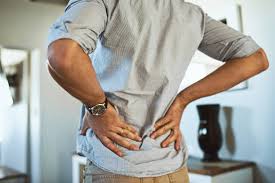El dolor de espalda no se relaciona con aspectos posturales, según los últimos estudios
The use of posture-correcting shirts for managing musculoskeletal pain is not supported by current evidence – a scoping review of the literature.

Background and aims The concept of bad posture being a dominant driver of pain is commonly held belief in the society. This may explain the significant attention supportive clothing such as posture-correcting shirts has recently gained in Scandinavia and the USA. The aim of this scoping review was to present an overview and synthesis of the available evidence for the use of posture-correcting shirts aimed at reducing pain or postural discomfort and optimising function/posture. Methods A systematic search was conducted for literature investigating the effect of posture-correcting shirts on musculoskeletal pain or function. PubMed, Embase, CINAHL, PEDro and the Cochrane Library were searched for relevant literature. Results of the searches were evaluated by two independent reviewers in three separate steps based on title, abstract and full text. For data synthesis, the population, intervention, comparator and outcome were extracted. The quality of the literature was evaluated using the Quality Assessment Tool for Observational Cohort and Cross-Sectional Studies and the risk of bias was assessed using the Risk Of Bias In Non-randomized Studies – of Interventions (ROBINS-I) assessment tool or the RoB 2.0 tool for individually randomized, parallel group trials. The overall confidence in the literature was determined using the Grading of Recommendations Assessment, Development and Evaluation (GRADE). Results A total of 136 articles were identified and six of these were included in the review. These studies were heterogeneous with regards to aims, outcomes and methods, presenting contrasting results. The overall findings were that posture-correcting shirts change posture and subjectively have a positive effect on discomfort, energy levels and productivity. The quality of the included literature was poor to fair with only one study being of good quality. The risk of bias was serious or critical for the included studies. Overall, this resulted in very low confidence in available evidence. An important limitation of all studies was that they were conducted in pain-free individuals. Conclusions The contrasting findings and the low quality of current literature, questions the intended effect of posture-correcting shirts and whether the changes it creates are in fact useful for clinical practice. Moreover, the findings are contrasted by the available evidence regarding posture and pain with a particular focus on whether this management strategy may have a detrimental effect on people living with musculoskeletal pain. A major limitation to the existing literature on the effect of posture-correcting shirts is that no studies have investigated their effect in clinical populations. Implications Based on the available literature and the major limitation of no studies investigating clinical populations, there is no good quality evidence to support recommendation of posture-correcting shirts as a management strategy for musculoskeletal pain. Promotion of this product may reinforce the inaccurate and unhelpful message that poor posture leads to pain. The efficacy of such garments should be tested in clinical populations and not only in pain-free individuals, to assess whether there is any meaningful benefit of this management approach. Until then, the use of posture-correcting shirts for musculoskeletal pain is not supported by current evidence.
https://www.ncbi.nlm.nih.gov/pubmed/31075089
 Blog de Fisioterapia Fisioterapia
Blog de Fisioterapia Fisioterapia



